Multi Stage Crossings Aren't Supposed to Trap Pedestrians
Stuck in the middle of the road? Traffic signals can be better timed!
Sometime ago, I made a video on how I gamed Singapore’s Green Lights on my bicycle. A fancy title for reverse engineering traffic light timings on 6 lane Victoria Street. “Green waves” are used to ensure people get continuous green lights by setting a desired travel speed and ensuring traffic signals turn green when people approach them.
Currently, this is done for motor vehicles. During morning rush hours, signals are optimised for traffic flow into the city, and reverses during evening rush hour.
But that also got me thinking. Could they be used for pedestrians too?
Singapore has a number of multi stage crossings like these.
Some were “upgraded” during road expansions, with a large centre island in the middle. I find them problematic for the following reasons:
Purpose. The purpose of multi stage crossings is to allow pedestrians to have more opportunity to cross on green, not trap people in the middle of the road.
Safety. The middle waiting island is not engineered to protect pedestrians from a car crash(!)
User Experience. Crossings should be based on people’s desire paths, or the path of least resistance. If fences are required to cage people, it means that design is not done right.
To learn more, I travelled to the Kingdom of Multi Stage Crossings; The Netherlands. While the Netherlands is known for cycling infrastructure and fietspaden, I was blown away by its traffic signals.
Arriving in Gouda, I noticed how almost every pedestrian crossing is broken into several stages. My initial train of thought went “Wow the pedestrians here have to stop and wait a lot like back home”. However, that wasn’t the case.
There were no green fences nor a detour in the middle. It is designed to match the path of a sane person crossing a road!
Upon pushing the beg button, I get a wave of green signals in less than 20 seconds. These signals time out at different times, depending on my walk direction. This means that drivers can get a green light as soon as I am halfway across and not have to wait till I finish crossing its entire length.
When people request for a green signal for both directions, both stages of the crossing stay green longer so that people could make it across in one go.
The main benefit of multi stage crossings lies in their flexibility. Pedestrian crossings largely influence the length of a signal phase as people walking need the most amount of time to cross an intersection (compared to bicycles or cars).
Splitting a crossing into multiple stages allows engineers to have the flexibility to adjust the duration of each stage, allowing pedestrians to begin crossing the road when there are no conflict points, and vice versa.
Phases and cycles
Most signals function by cycling through multiple phases. The duration it takes for a controller to go through all phases is called a cycle length. A shorter cycle length reduces wait times for people using an intersection. Here are some phases used at the intersection next to Tampines Hub.
Multi Stage Crossings in Singapore
There are many places in Singapore where pedestrians would benefit from a multi stage crossing.
For example, this T junction at Tampines Avenue 2 has an island in the middle. During a phase where vehicles can head straight or turn right, the single stage pedestrian crossing stays red despite having no conflict points.
Many Tampines residents are aware of this perk, thus confidently cross on red.
However, if it were a 2 stage crossing, pedestrians can begin to make their way to the middle of the road.
Compared to a single stage crossing, pedestrians have safely crossed half of the T junction by the time the other stage is clear, thus saving time.
In Singapore, a far too common way to address non compliance is by raising penalties and clamping down with enforcement. By that logic, those pedestrians should be heavily penalised for breaking the rules!
But breaking free of that mentality to understand people’s desires can foster a positive culture of understanding and developing people centric design. Imagine a culture of design thinking in Singapore, how different would our streets look like?
Why doesn’t this happen in Singapore?
Compared to the Netherlands, mutli stage crossings seem to be timed to split a carriageway into 2, so that green waves can be better optimised for car travel. Pasir Ris Drive 3 for instance, has single stage crossings converted to multi stage ones when the road was expanded from 4 to 6 lanes.
While the benefit for car drivers is minimal, the disruption to pedestrians and cyclists is huge - especially along a major park connector route.
^ Same crossing in 2025
Multi stage crossings in Singapore tend to optimise for one direction of travel for pedestrians, regardless of travel demand. People walking and cycling southbound at the crossing above would have the lights synced for them, but those heading northbound would have to wait an entire cycle in the middle of the road.
How can multi stage crossings be made?
Many 2 lane roads in Singapore have 5m wide road lanes, presenting a big opportunity for a road diet. An example is this single stage crossing along Tampines Street 21, opposite Pasir Ris Secondary School.
Currently, the signal operates with a timing of:
Steady green man (Walk Signal) - 5 seconds
Flashing green man (Clearance Time determined by 1m/s crossing length) - 11 seconds
All red (No car / pedestrian buffer) - 3 seconds
Given that multi lane roads have road lanes that are around 3 to 3.2m wide, could the 5m wide lanes be narrowed so to 3m so that a pedestrian island could be made in the middle?
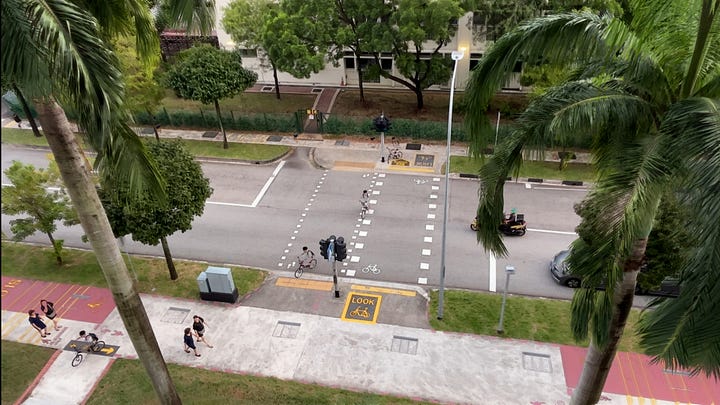
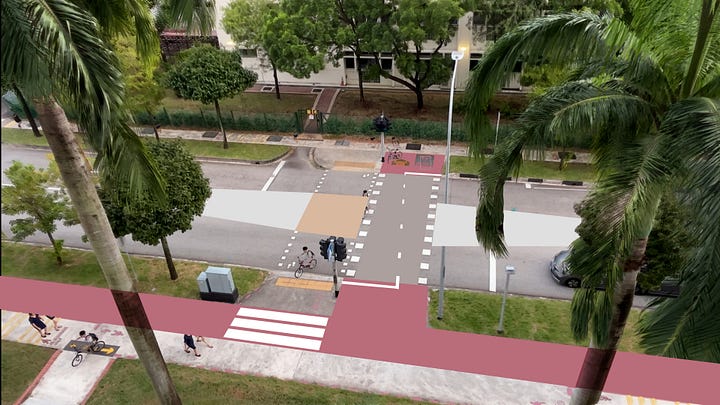
Following which, the signal timing can be adjusted according to which direction people are crossing the street. The first stage which they cross can time out before the second stage does, giving drivers a green quicker than before.
As paradoxical as it sounds - creating infrastructure that prioritises pedestrians will come around and benefit drivers too!
Intersections
Multi stage crossings can also work well at intersections - especially those with protected right turns for drivers.
The following video shows the traffic signal cycle at the intersection on Tampines Avenue 4 and Tampines Avenue 5.
There are 6 phases in the current arrangement. With a multi stage arrangement, pedestrians have a higher chance of getting a green signal. People with mobility needs will also benefit from having more time to finish their crossing. Dark green arrows illustrate movements that can only be made when a multi stage arrangement is present.
Conclusion
Having experienced traffic signals in Singapore and the Netherlands, it’s eye opening to see how traffic signals with similar capabilities operate so differently.
Multi stage crossings in Singapore are designed to be optimised for car traffic.
Multi stage crossings in the Netherlands are designed to be optimised for pedestrians which in return, benefit drivers too.
So if you’re ever stuck in the middle of a 6 lane road while traffic buzzes by, remember that the traffic signals that trap pedestrians can also liberate them. The technology is already here. What matters is how it’s being used.





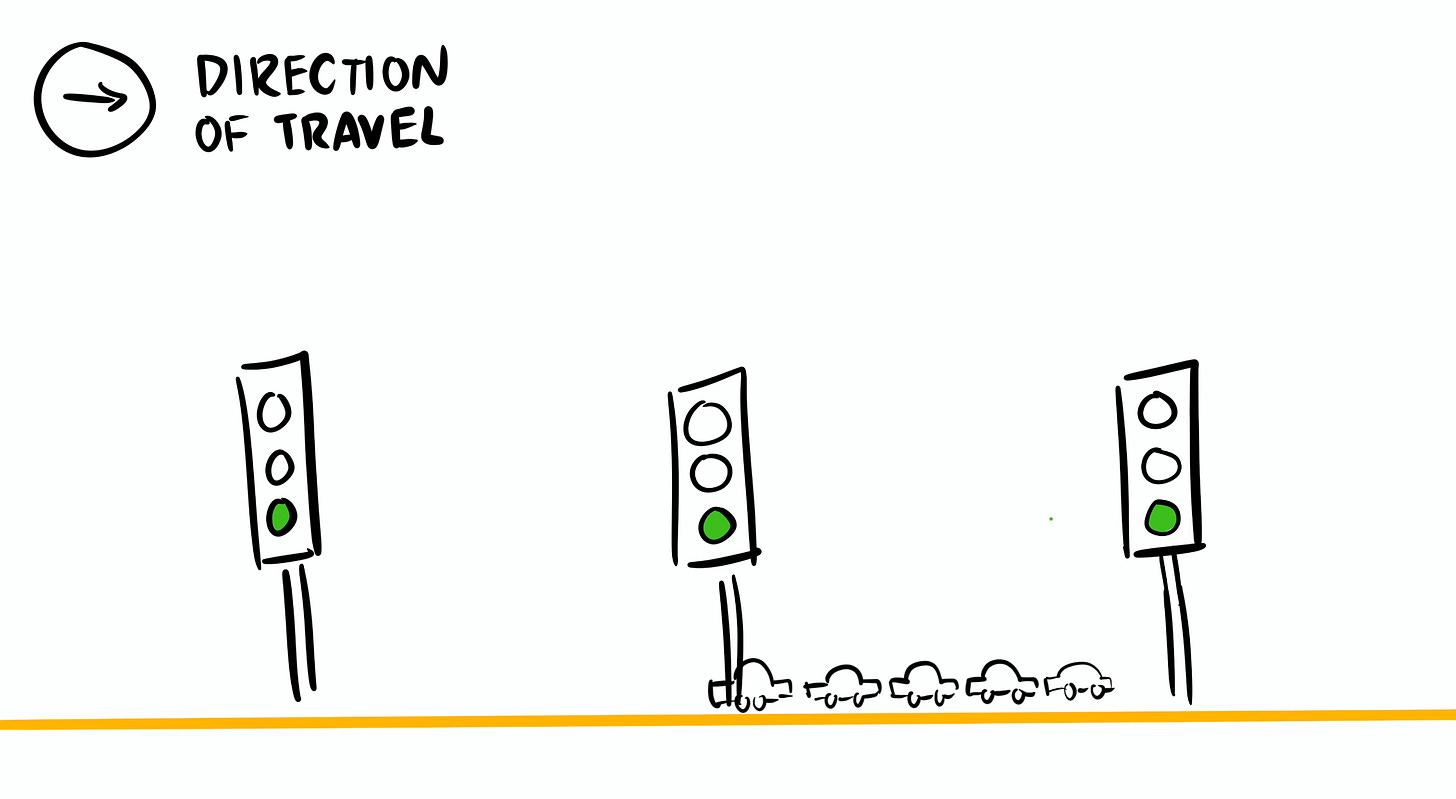
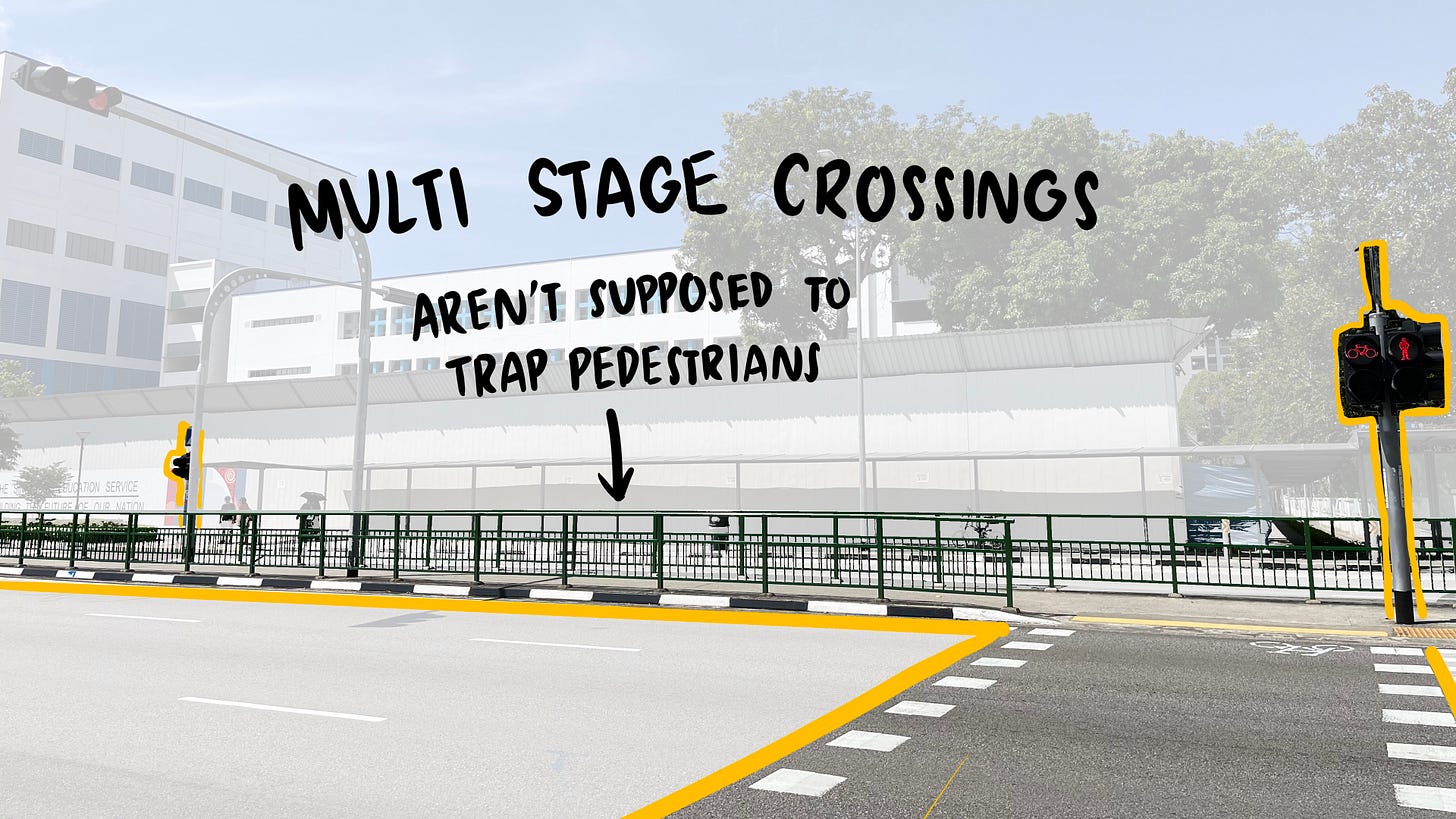
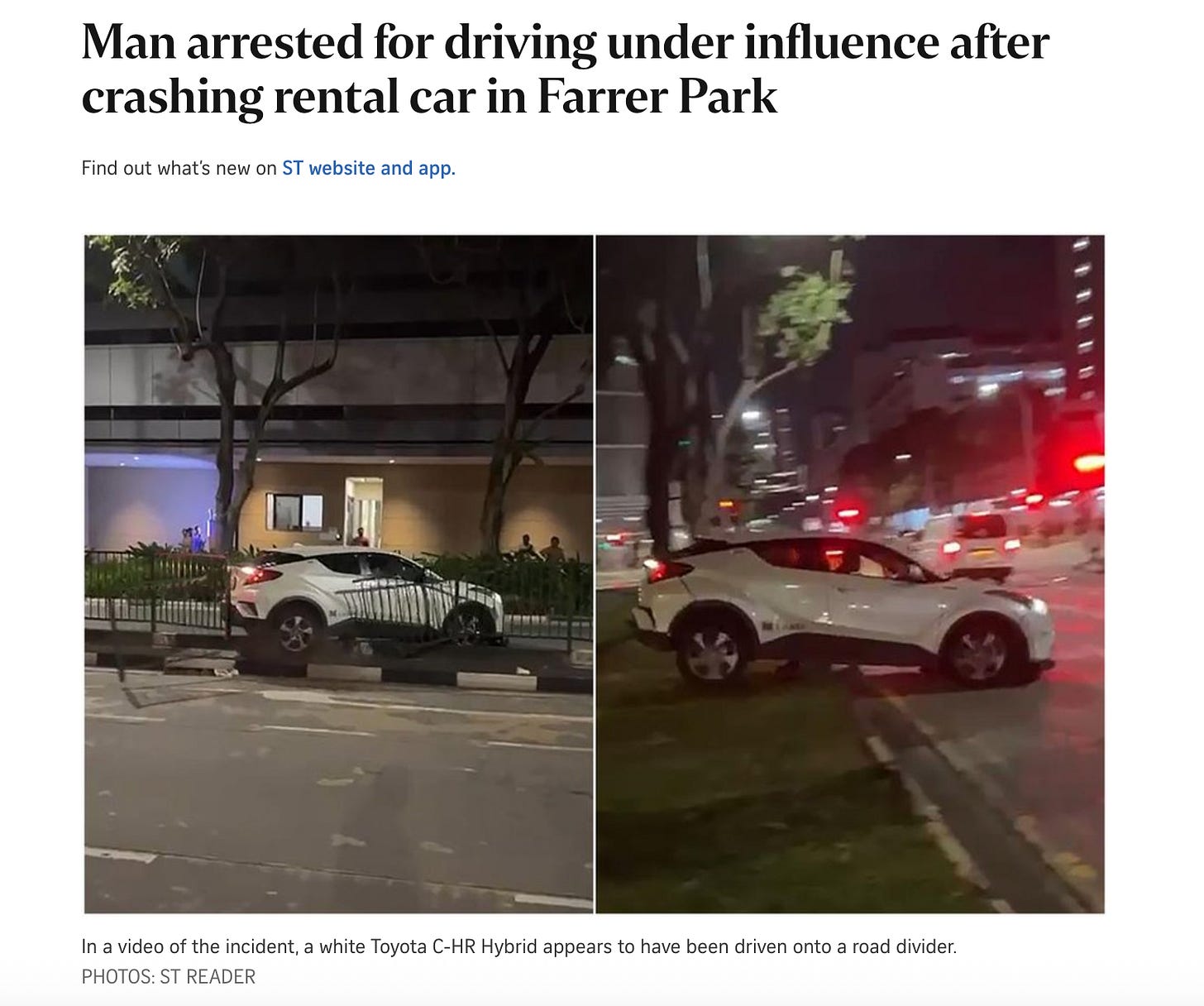
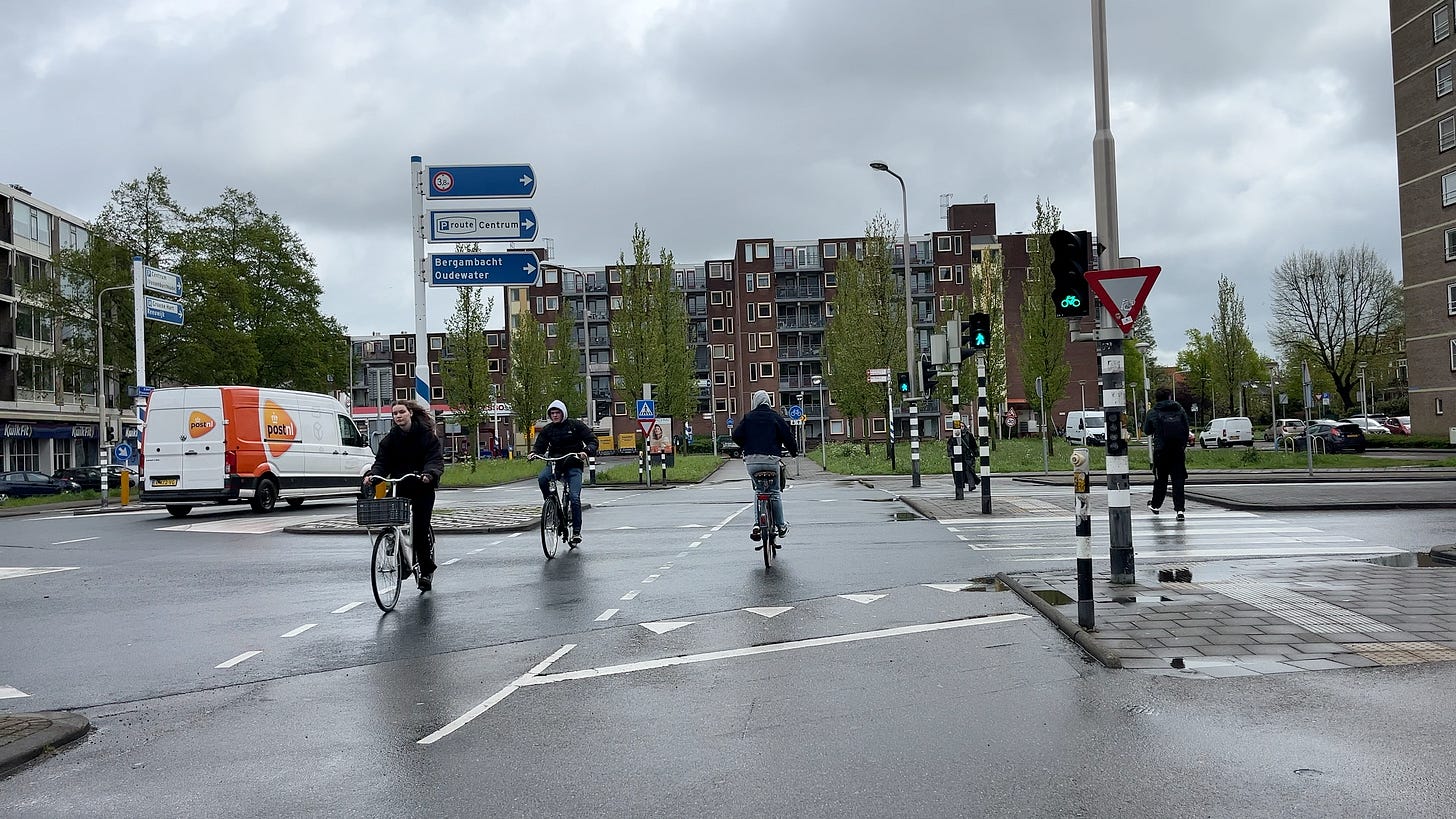
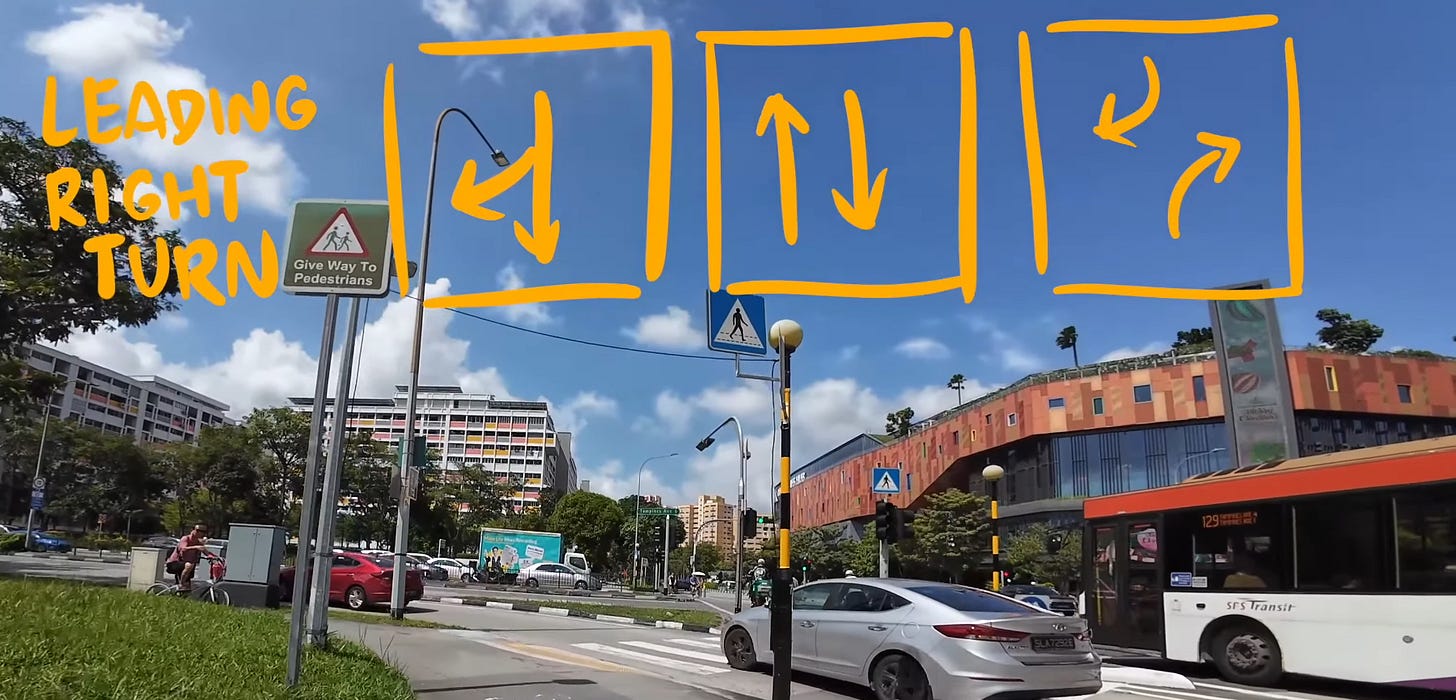
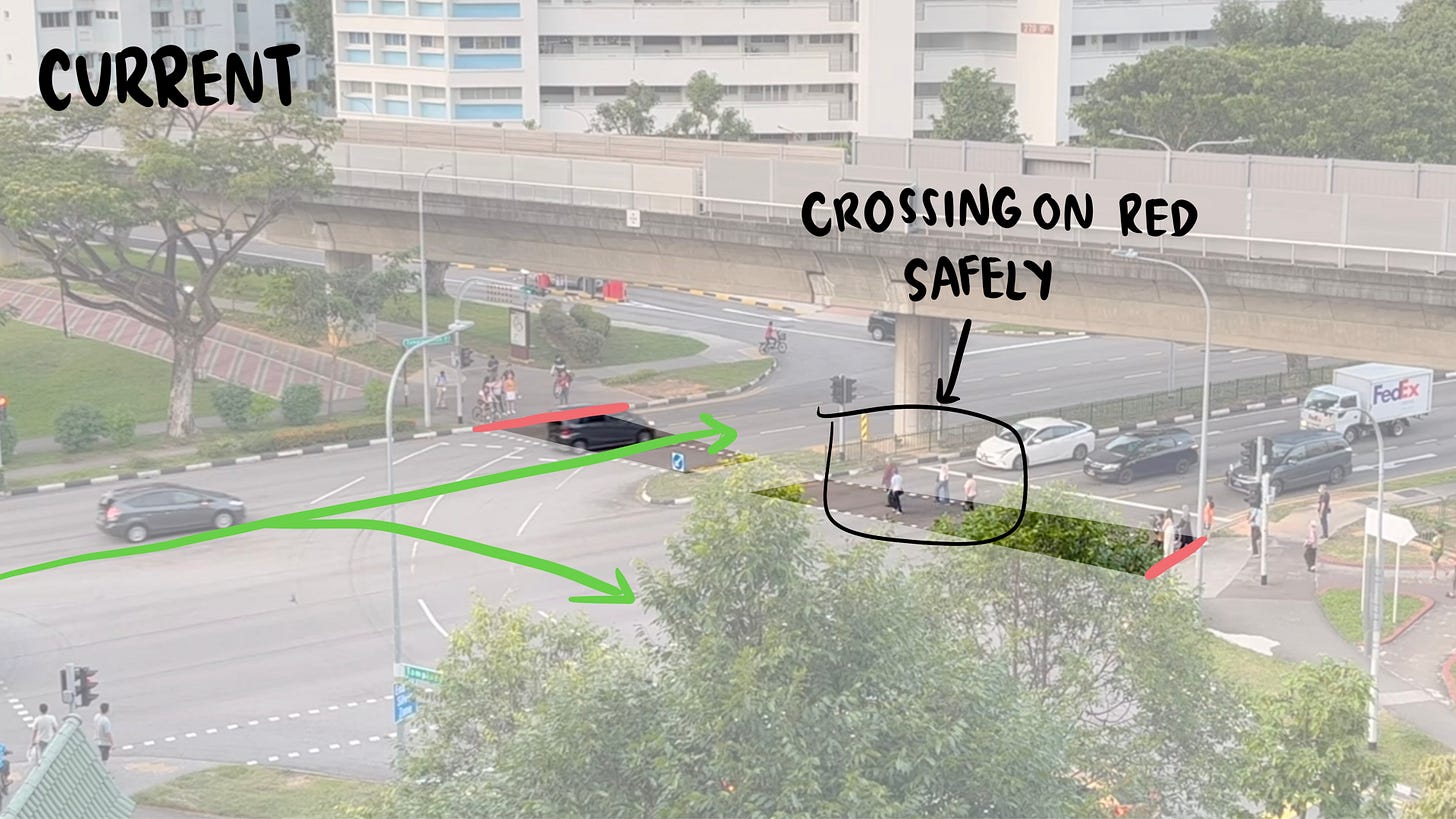
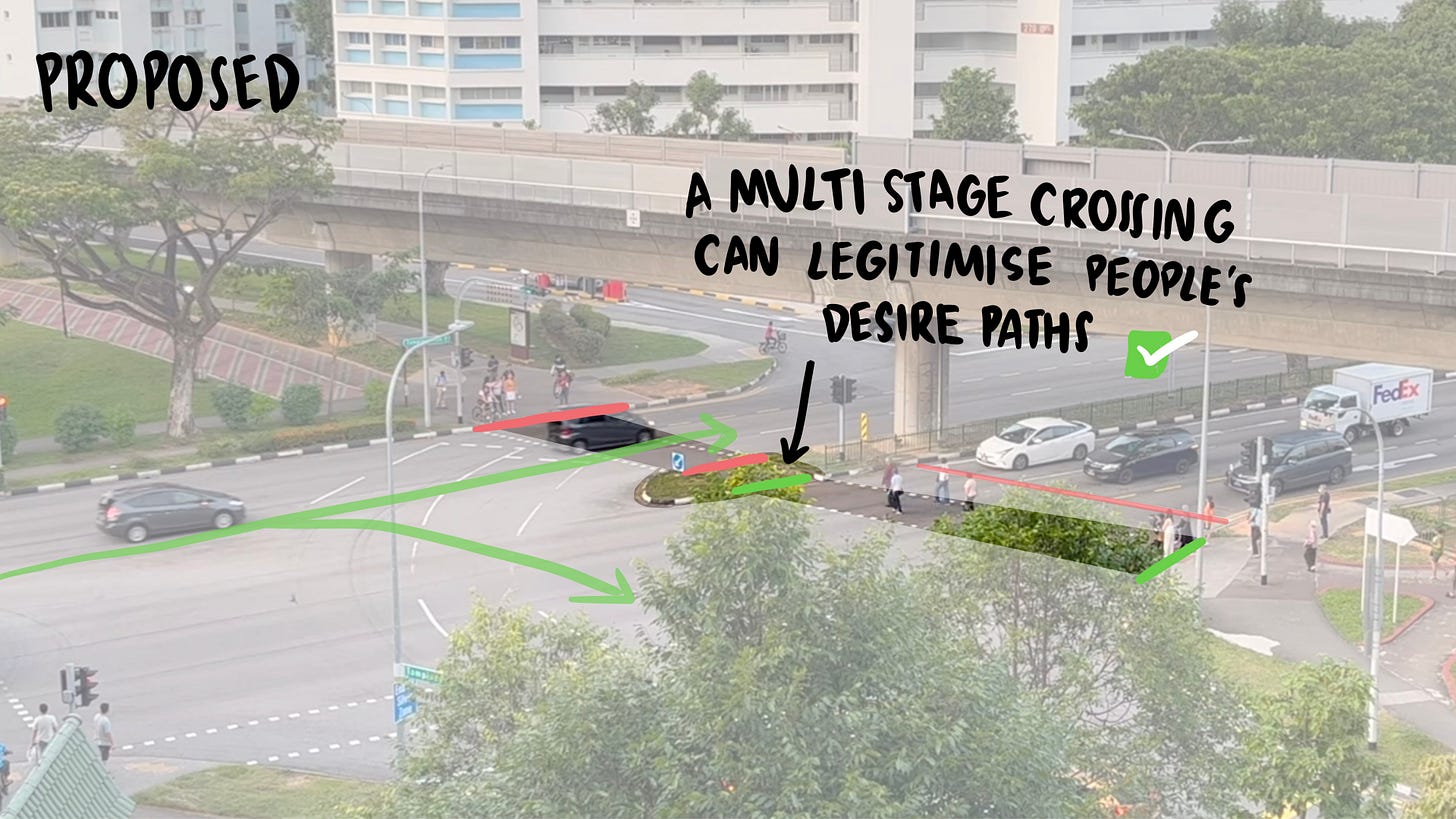
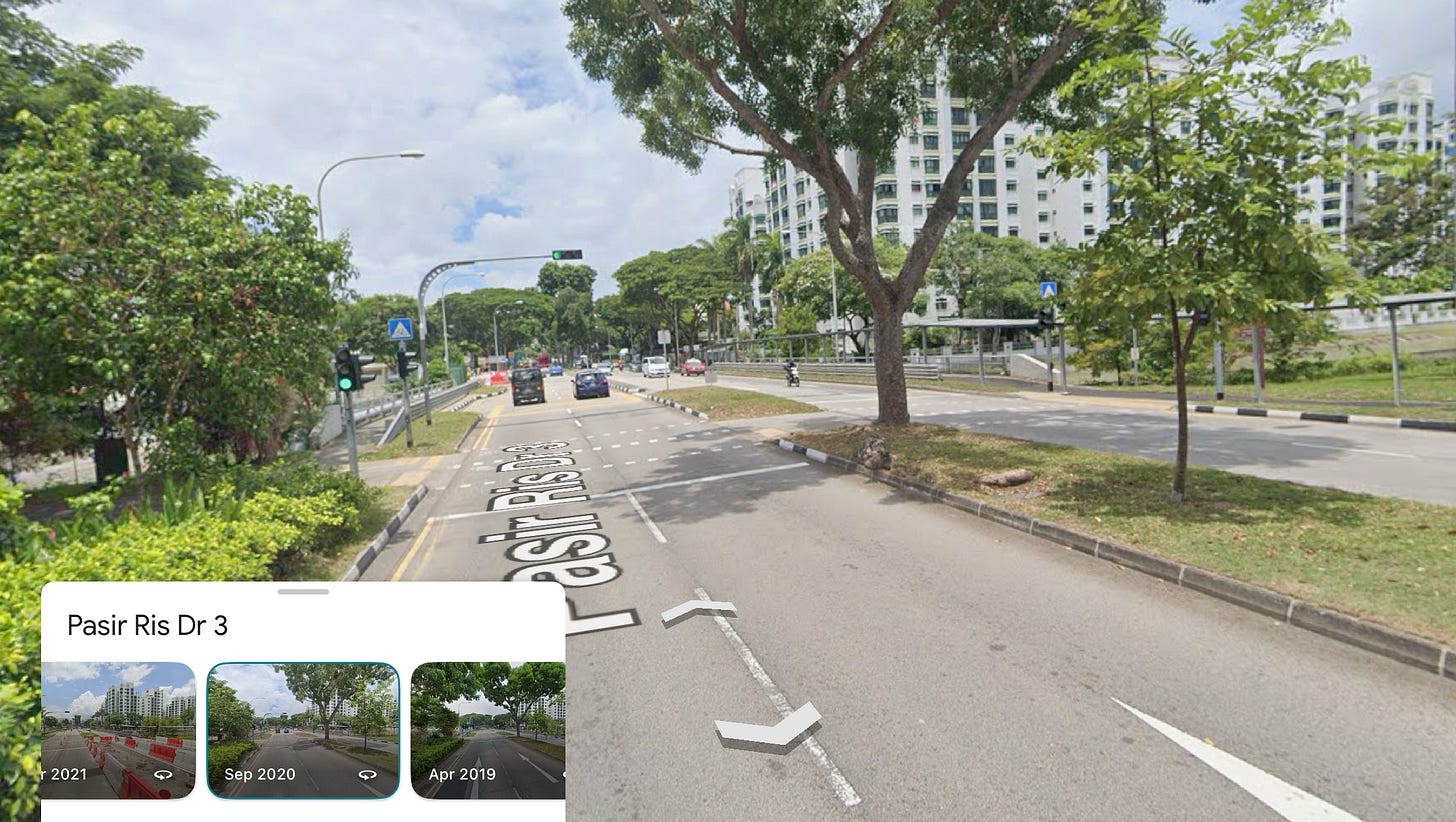
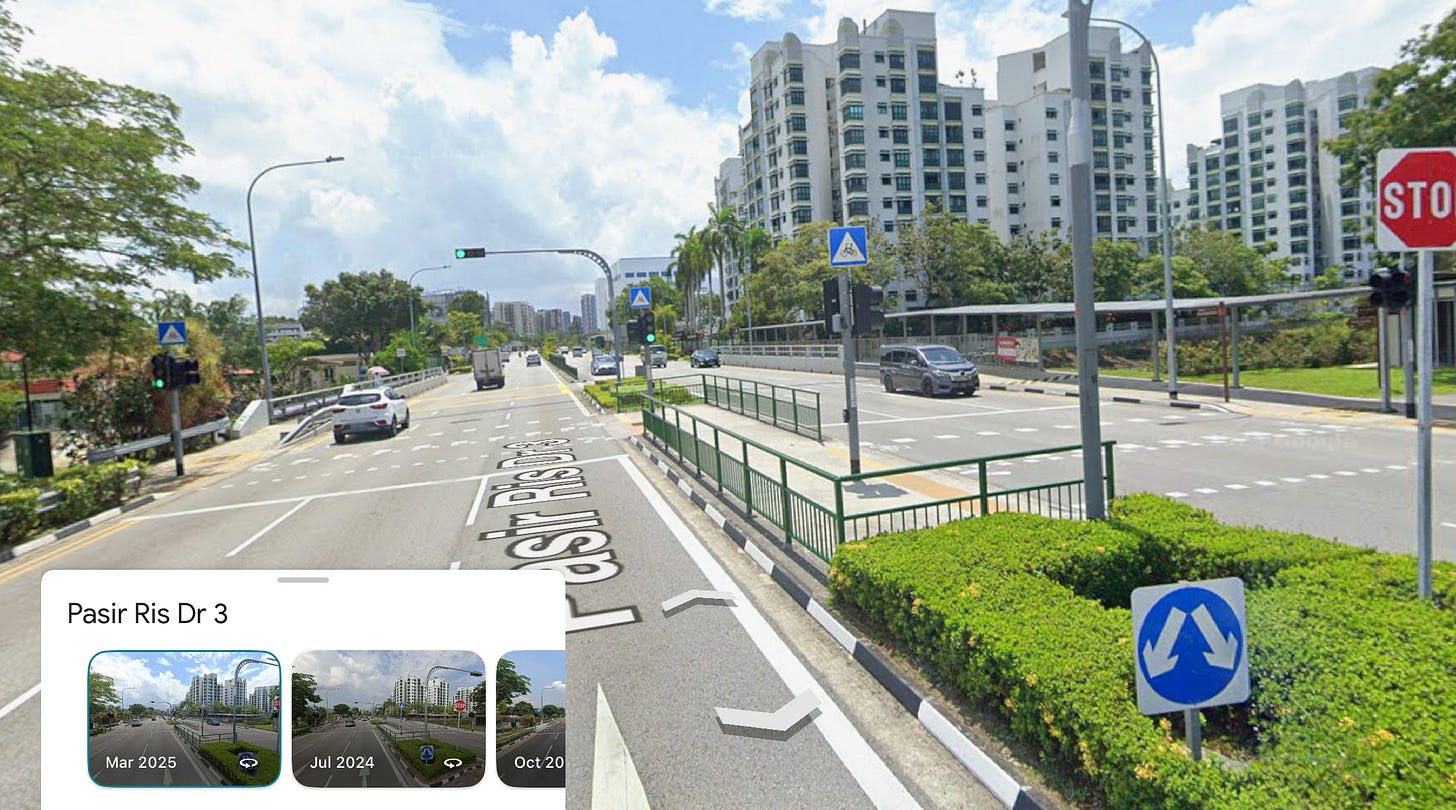
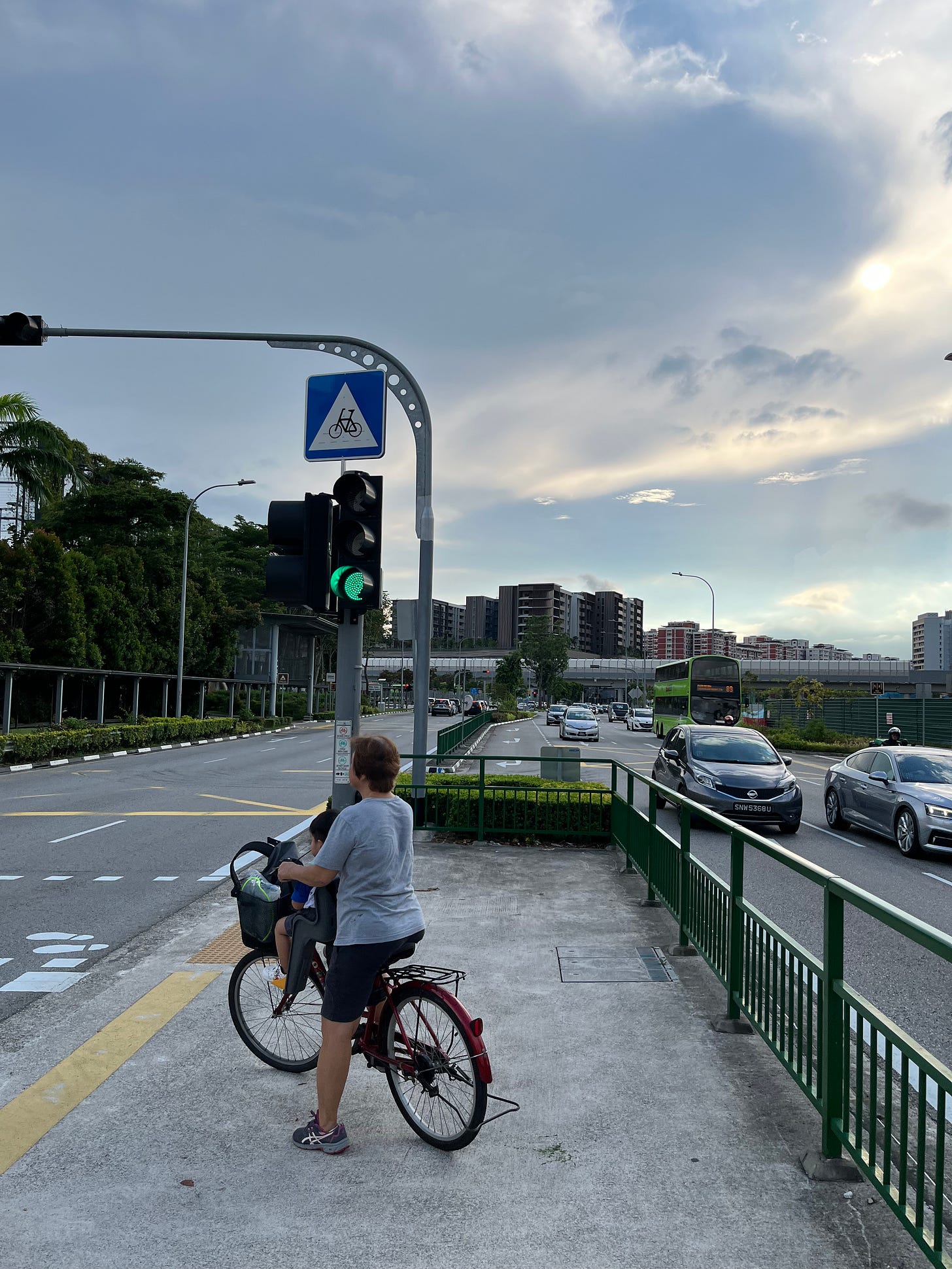
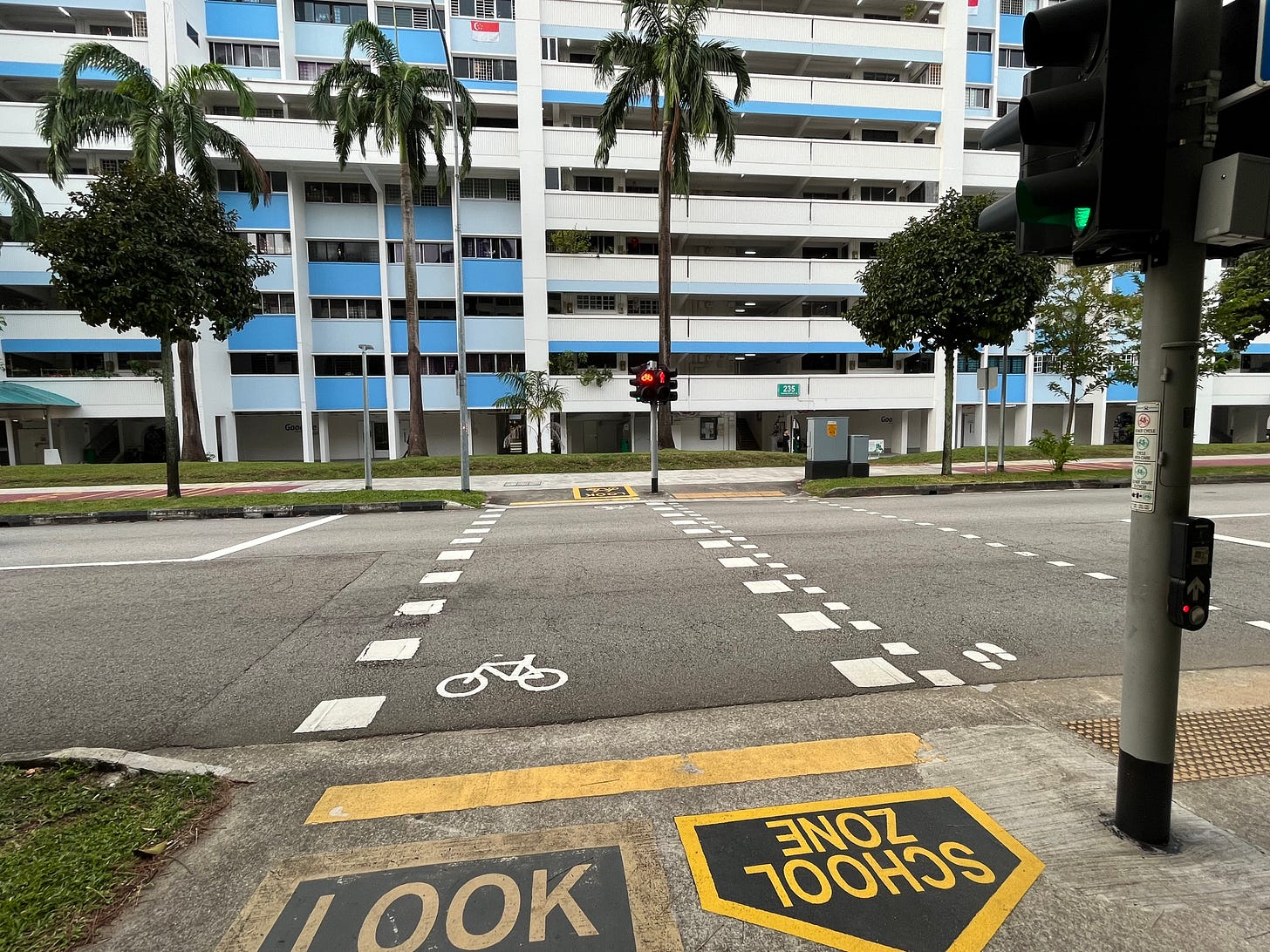

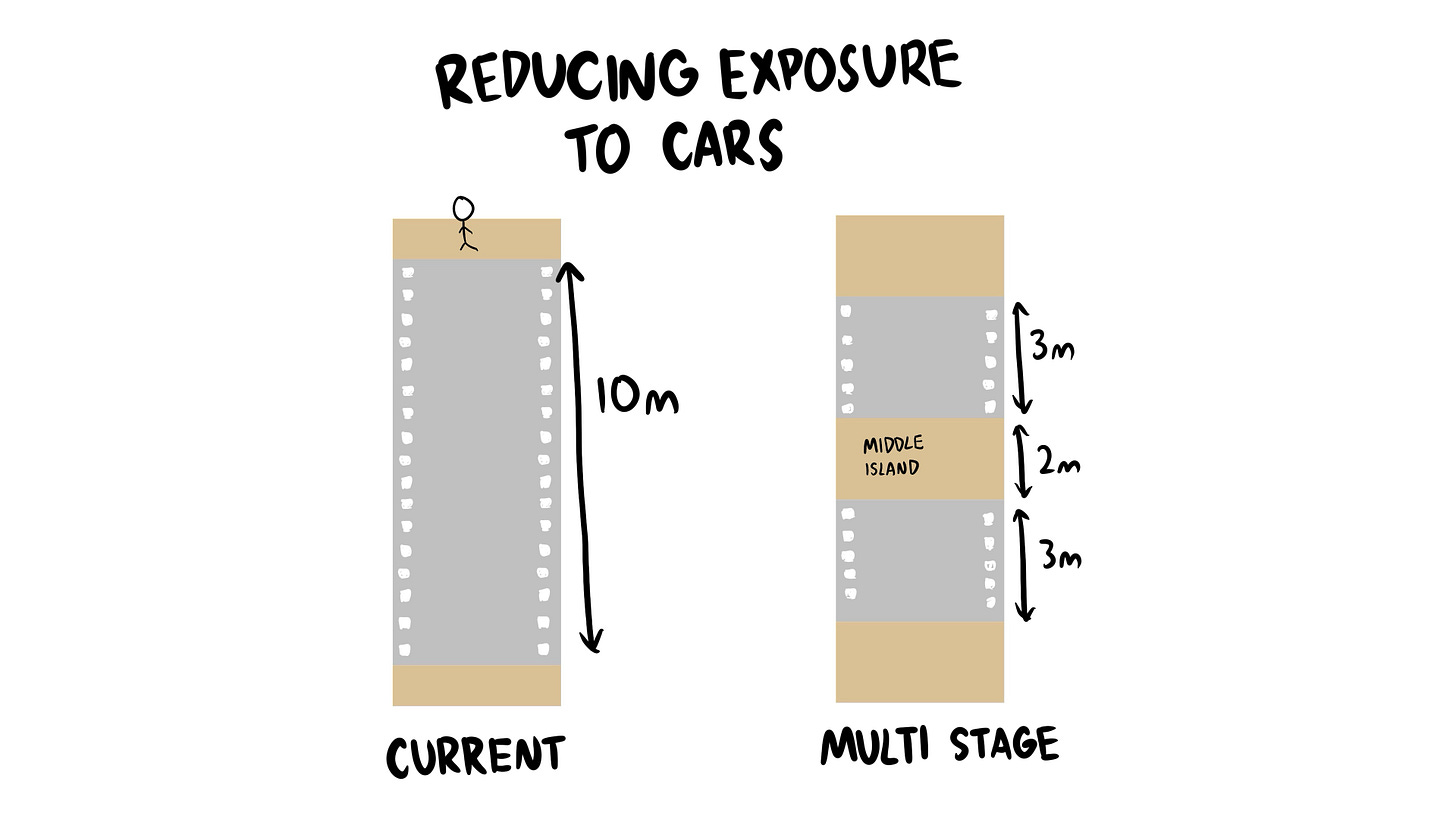

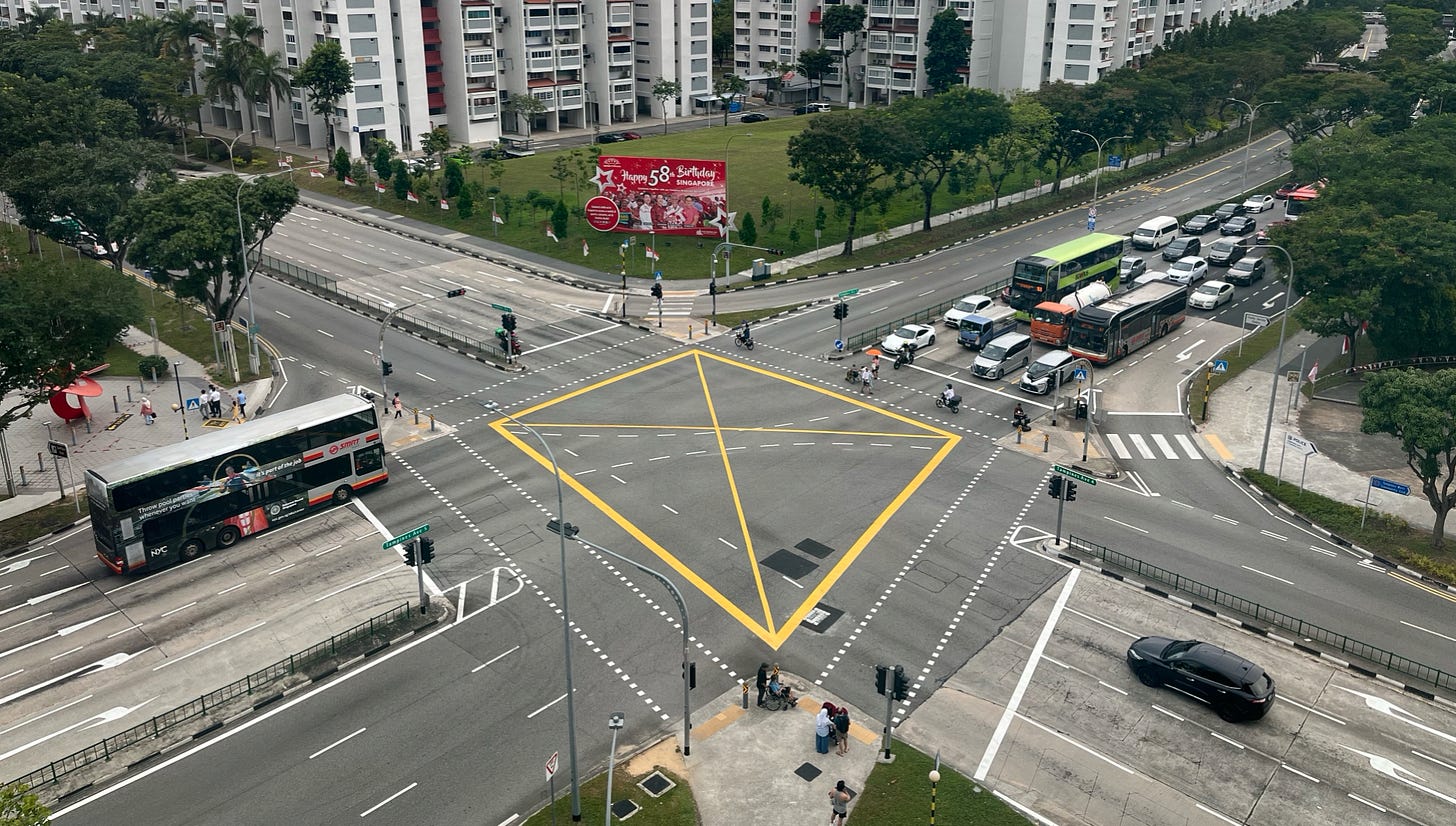
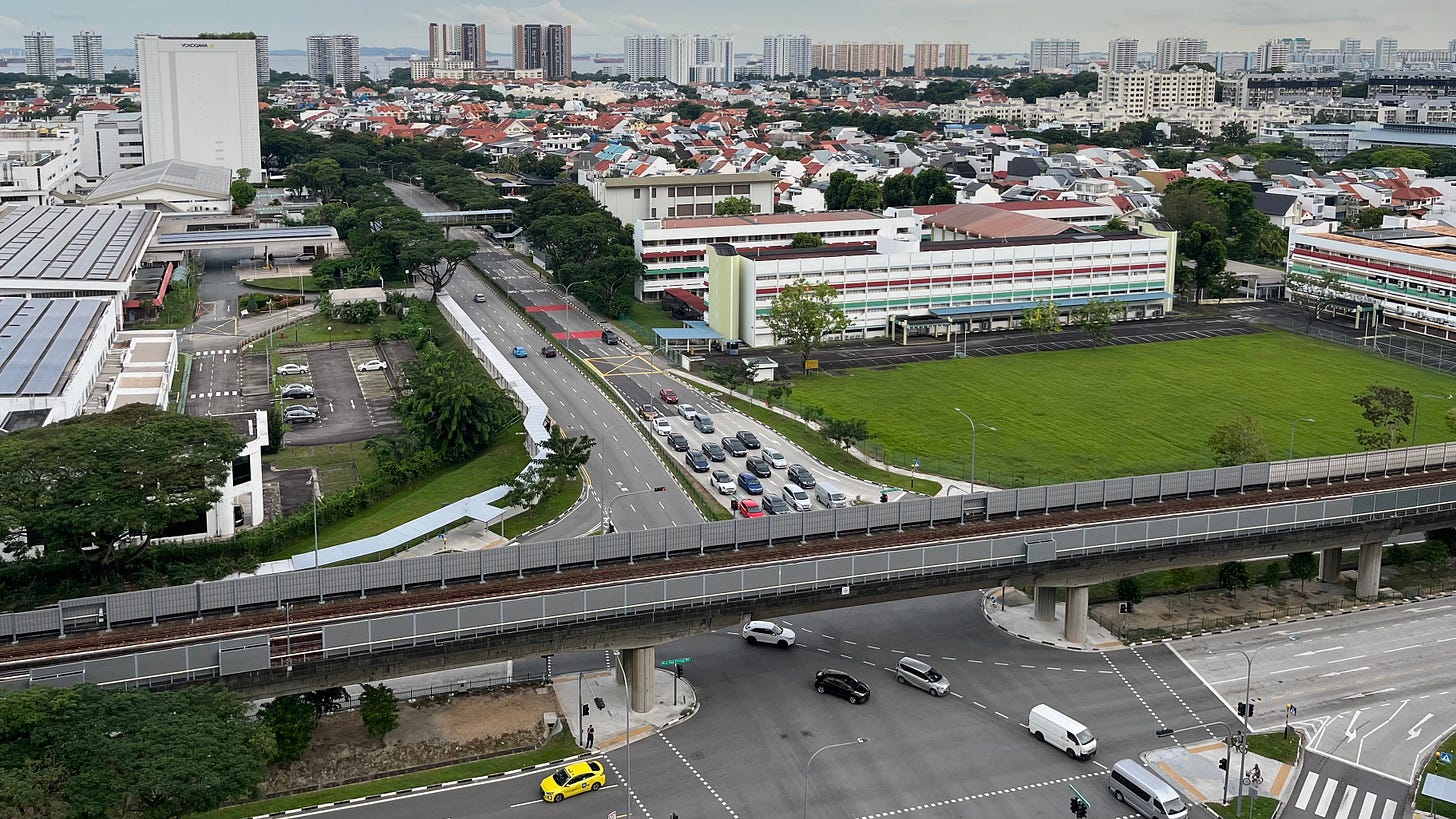
This is a very good analysis and great illustrations!
The problem seems to be a lack of innovative thinking from the traffic systems providers. It seems like they buy a system (I think it is provided by an Australian company) and they use it as is, but don't think beyond that into how it could be designed and adapted for a better outcome.
There is another area of improvement the designers could make. When there is a pedestrian-only crossing (i.e. a cross that is not at a junction) the lights should adapt to the traffic demand, rather than work on a fixed timer. For instance, if the road sensors detect a lack of vehicle traffic, why make the pedestrians wait for no reason? If not vehicle traffic is oncoming, then switch on the green man and let the pedestrians cross. This will also help road users because the pedestrians will have crossed before vehicles subsequently arrive.
From personal experience it seems the pedestrians are made to wait, and by the time the green man light comes on, it coincides with vehicle traffic arriving - causing the car drivers to wait unnecessarily too! I am not sure if this is coincidence or the way the pedestrian lights are timed with other lights (lights at a road junction) further up/down the road. Does seems inefficient and the opposite of innovative.